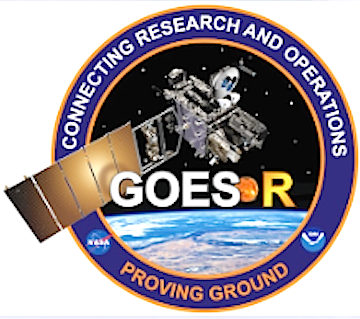

There have been some hurry-up-and-wait moments recently regarding several launches, specifically GOES-R and WorldView-4. The good news is there is now an update that includes a new launch date for GOES-R.
The postponement of GOES-R was caused by the same minor Atlas V booster issue discovered on ULA's WorldView-4 mission scheduled to launch from Vandenberg Air Force Base. The ULA team is actively working towards a resolution. Due to impacts from Hurricane Matthew, GOES-R is now scheduled to launch on November 16, 2016, at 21:42 GMT (4:42 p.m. EST). The satellite will launch from Space Launch Complex 41 at Cape Canaveral Air Force Station, Florida, aboard an Atlas V 541 rocket.
Coverage will begin approximately 1.5 hours before launch and will end approximately 30 minutes after launch, returning to air around 3.5 hours after launch for spacecraft separation. Live updates will be posted on the NOAA Satellites GOES-R Launch Page and the NOAA Satellites Twitter, NOAA Satellites Facebook, and GOES-R Facebook accounts.

GOES-R, built by Lockheed Martin, will be known as GOES-16 once it reaches geostationary orbit, will be placed in the 89.5 degrees checkout orbit where it will undergo an extended checkout and validation phase of approximately one year. The satellite will transition to operations immediately afterward. GOES-R’s operational orbit has not yet been determined. The final decision will be based on the health and performance of the GOES constellation. NOAA’s Office of Satellite and Product Operations will be responsible for determining the operational orbit for GOES-R.
This satellite that is appreciated in a diverse group of scientific communities and is reflected in the wide variety and applications of GOES-R data and products. GOES-R data will be used in real-time for critical life and property forecasting and warning applications primarily by the National Weather Service. These users will be able to monitor the rapid development and interaction of severe storms.
Smaller public and private sector users will be able to obtain GOES-R data through their own Earth stations, or through terrestrial network distribution.

Larger, institutional users can exploit the increases in spectral, temporal, and spatial resolution and assimilate radiances for use in prediction models, increasing the timeliness and accuracy of forecast products.
The Proving Ground is a collaborative effort between the GOES-R Program Office, NOAA Cooperative Institutes, a NASA center, NWS Weather Forecast Offices, NCEP National Centers, and NOAA testbeds across the country. The Proving Ground is a project in which simulated GOES-R products can be tested and evaluated before the GOES-R satellite is launched.
The simulated GOES-R products are generated using combinations of currently available GOES data, along with higher resolution data provided by instruments on polar-orbiting satellites such as MODIS on NASA’s Aqua and Terra satellites as well as model synthetic satellite data.
The Proving Ground was established to realize the benefits of the GOES-R system as soon as the satellites are launched and operational. GOES-R will mark the first major technological advances in geostationary observations since 1994. The advances include improvements upon existing data such as increased spatial, temporal, and spectral resolutions for Earth monitoring and improved space weather observations and initiation of new operational observations such as lightning mapping.
Many of the GOES-R products will be aimed at monitoring severe weather and helping forecasters issue earlier, more accurate severe weather warnings. In order to create the most useful severe weather tools possible, the GOES-R Proving Ground is working closely with the Experimental Forecast Program and the Experimental Warning Program of the NOAA Hazardous Weather testbed, developing and utilizing experimental GOES-R products to determine their utility in monitoring and forecasting severe convective weather.

